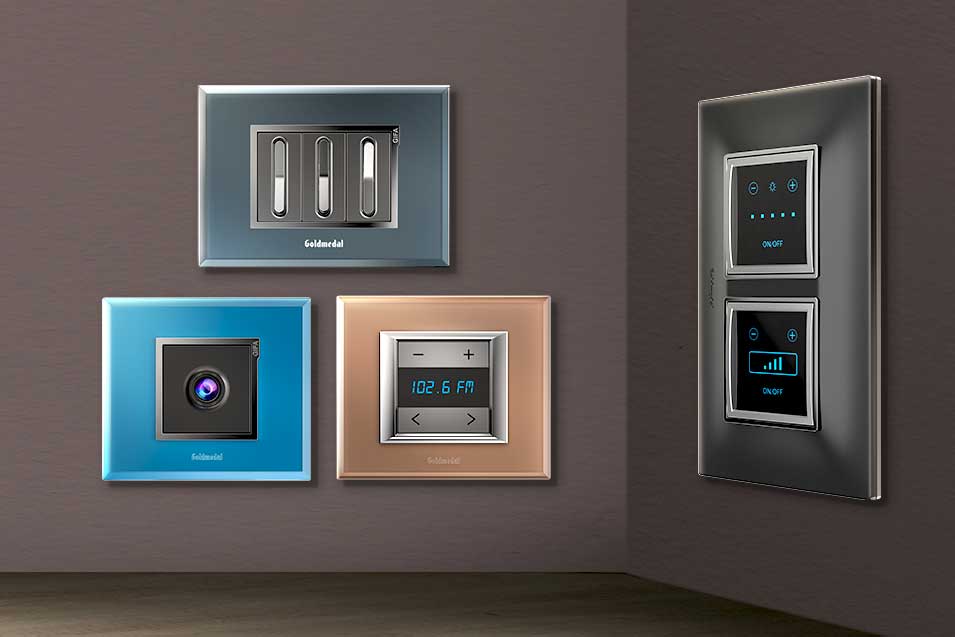As we look further into the future, the ongoing advancements in switch technology are likely to continue transforming industries and enhancing everyday life. The evolution of switches is tied closely to broader trends in automation, energy management, and user-centered design. These lülitid trends point to a future where switches are not merely tools for controlling power, but integrated components of sophisticated, intelligent systems.

One key area where switches are expected to see rapid development is in the realm of wearable technology. As smartwatches, fitness trackers, and other wearable devices become more prevalent, the role of switches in these devices will become more refined. These wearables are designed to provide seamless interaction between the user and the technology, often relying on sensors and touch-based switches. For instance, a smartwatch might have capacitive touch switches or gesture-based controls to allow users to navigate menus or control other connected devices. As these wearables become more sophisticated, the switches integrated into them will need to offer better responsiveness, efficiency, and accuracy. The trend toward non-invasive, touchless interfaces will likely continue, with future wearables incorporating innovative switch technologies such as voice recognition or even brain-computer interfaces that interpret signals from the user’s brain to perform commands.
Similarly, smart home technology will continue to drive advancements in switch functionality. Smart switches in homes and buildings allow users to control a variety of systems—lighting, heating, cooling, and security—remotely, using apps or voice commands. However, the integration of these switches with machine learning and AI will elevate the experience to the next level. For example, AI-powered switches could anticipate user behavior and adjust settings based on the time of day, weather conditions, or the occupants’ habits. Imagine lights that automatically adjust their brightness based on the time of day or a thermostat that learns the household’s preferred temperature settings over time, adjusting itself without any manual input. These intelligent switches would enhance the user experience by learning from behavior patterns and offering highly personalized automation that adapts to the needs of each individual or family.
Security and privacy are other important considerations for the next generation of switches. As IoT devices become more interconnected, ensuring the security of the networks that switches control becomes critical. Cybersecurity vulnerabilities in switches could potentially allow hackers to gain control over devices or systems, leading to breaches of privacy, theft, or even physical damage. To counter this, future switches will need to be designed with robust security measures, such as encrypted communication protocols or biometric authentication, ensuring that only authorized users can operate or modify them. With increasing reliance on remote control and automation, the safety of devices and networks will become more complex, and switches will need to be at the forefront of security innovation.
One of the most exciting prospects for switches lies in their role in energy sustainability. With the global shift toward reducing carbon footprints, switches will continue to evolve to play a significant part in energy management. Smart grids and energy-efficient systems will increasingly rely on switches to optimize energy distribution. These systems will use real-time data to adjust power use dynamically, based on demand and availability. Advanced switches will be able to monitor energy consumption at a granular level, allowing users to track and manage their energy use more effectively. For instance, switches could be part of an integrated system that adjusts power consumption based on time-of-day pricing or automatically adjusts lighting and heating to reduce energy consumption when the demand is high. These features would make energy management more efficient, supporting efforts toward a sustainable future.
The automotive sector also stands to benefit from continued advancements in switch technology, particularly as the world moves further toward autonomous and electric vehicles. In electric vehicles, switches are integral to managing battery power, energy regeneration, and the various electrical systems that ensure the vehicle’s operation. As EVs become more sophisticated, switches must be able to handle larger currents, ensure efficient power distribution, and be durable enough to withstand the challenging automotive environment. In autonomous vehicles, switches may be used to control critical systems such as navigation, braking, and vehicle-to-vehicle communication. These systems need to be responsive, precise, and fail-safe, ensuring safety and reliability as the technology advances.
The increasing demand for interactive and immersive experiences in virtual reality (VR) and augmented reality (AR) is another area driving innovations in switch technology. In these environments, switches are often used to control the interaction between users and virtual worlds. Traditional physical switches may not be ideal for VR/AR settings, so the development of gesture-based controls, motion sensors, and eye-tracking systems is becoming more prevalent. These advanced switches allow users to interact with virtual environments intuitively, without the need for physical contact. VR headsets, for instance, may incorporate touch-sensitive switches embedded into the frame, which allow users to control actions through gestures or taps. In AR, the use of voice-activated switches is likely to become more common, enabling users to interact with digital overlays while keeping their hands free to interact with physical objects in the real world.
In the military and aerospace industries, switches continue to evolve to meet the demands of high-stakes environments. These sectors require highly reliable switches that can function in extreme conditions, including intense vibrations, high altitudes, and temperature fluctuations. For instance, switches used in aircraft or military equipment need to be both rugged and precise. As technological advancements lead to more sophisticated and automated systems, switches are playing a greater role in controlling systems critical to national security and space exploration. Highly specialized switches in these fields must be durable enough to withstand harsh environments and function flawlessly in emergencies.
In the near future, biodegradable switches may also emerge as a response to environmental concerns. With the growing awareness of the impact of electronic waste, researchers are exploring alternatives to traditional switches made from metals and plastics. Biodegradable switches could potentially be used in products that are intended to have a short lifespan, such as disposable medical devices or consumer electronics that are periodically replaced. These eco-friendly switches would reduce the environmental footprint of electronic waste and contribute to sustainability efforts across various industries.
As switch technology continues to evolve, its impact will become more profound and widespread. With their ability to enhance efficiency, reduce energy consumption, and make systems smarter, switches will continue to be essential in creating the interconnected, automated, and sustainable world of tomorrow. Whether in homes, industries, transportation, or the health care sector, the future of switches is poised to redefine the way we manage and interact with technology. Their continued innovation will shape the future of automation, energy management, and connectivity, making them integral components of the world’s technological landscape.
